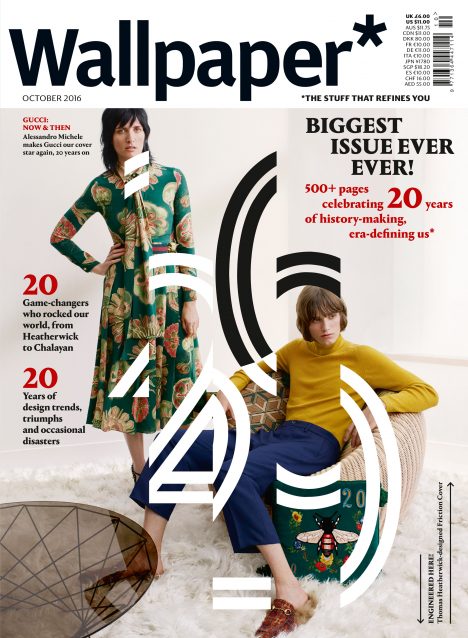 Wallpaper*’s editor-in-chief has elevated the magazine to a full-fledged design brand.
Wallpaper*’s editor-in-chief has elevated the magazine to a full-fledged design brand.
Wallpaper*, the iconic design magazine that continues to break new ground, turned 20 last fall. The anniversary issue was much-celebrated (and with good reason – it is stunning) and beefy. At 508 pages, it was twice the size of their standard monthly issue.
Much of the success of the magazine in the last decade – a notoriously dicey time for print magazines – is thanks to its editor-in-chief Tony Chambers.
“Wallpaper* owes much of its current clout to Englishman Tony Chambers, 53, who has been editor-in- chief since 2007. He was previously art director for GQ Magazine, a leading publication for men’s fashion,” writes Natasha Ann Zachariah in The Straits Times.
“After he took on the top post, it went from being just a magazine to a brand,” Zacharia continues.
Part of that growth included more than 100 pocket-sized City Guides, a popular website, an in-house interior design service, and popular events.
“Every year at Milan Design Week, design aficionados throng Wallpaper*Handmade, an annual exhibition Chambers created, where designers, artists and craftsmen are commissioned to create bespoke items such as furniture for the themed event,” Zacharia notes.
If this print-magazine-turned-brand empire story sounds familiar, it might be due to its roots. Wallpaper* was originally founded by Tyler Brule, the genius behind the Monocle brand. He sold Wallpaper* in its infancy to Time Warner in 1997, before founding Monocle.
The two titles are trailblazers in the media landscape, with similar ideas of how to develop print into a brand.
“Now everyone else wants to be a brand because he knows it’s the way forward, but Wallpaper* always had that. It’s always of the moment,” Chambers noted while in Singapore late last year.
Today, Chambers is aware that it faces competition from niche titles like Kinfolk, but he dismisses most of that as “slightly smoke and mirrors. “The thing that no one can hold to Wallpaper* is the depth, richness and the quantity of real content and visual journalism.”
Meanwhile, he welcomes others to try, saying there’s always room for more magazines.
“It can never be too crowded. I wouldn’t say the rest are imitators, but competition means that what you are doing is resonating.”
There is a certain cockiness, maybe even arrogance, in his stance, and deservedly so, I believe. Wallpaper* has not only survived for 20 years but grown into an influential voice in the design world with its range of offerings. That, you’d have to agree, deserves a tip of the hat.
